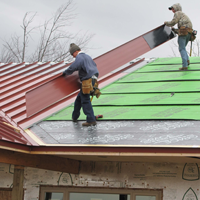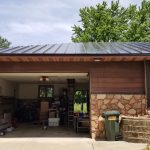by Diane Cardwell for the New York Times
FONTANA, Calif. — At first glance, Anthony and Vanessa Genau’s home in a subdivision beneath the San Gabriel Mountains here is like any other gracious new suburban dwelling, with an open-plan living space, granite countertops and stainless steel appliances.
But, along with 19 other cream, taupe and rust stucco houses that cradle the landscaped playgrounds here, it is actually something else: a large-scale testing ground for an energy system of the very near future.
 With a combination of rooftop solar panels, smart thermostats, advanced water heaters and other high-efficiency features, the homes are all built with a similar goal: to make at least as much energy as they use over a year.
With a combination of rooftop solar panels, smart thermostats, advanced water heaters and other high-efficiency features, the homes are all built with a similar goal: to make at least as much energy as they use over a year.
It’s a concept known as zero net energy, and the cluster of homes here represents one of the nation’s largest experiments to see if zero net energy can be put into wider use.
“It’s not that it cannot be done,” said Ram Narayanamurthy, technical executive at the Electric Power Research Institute, a nonprofit utility-funded group that is conducting the study. “The question that we’re trying to answer is, ‘Can it be done for everyone?’”
That question has particular urgency in California, whose goal is that all new homes be net-zero or the equivalent by 2020. But as the price of installing and operating once-rarefied technologies has plummeted, builders across the country are increasingly offering homes with the promise of comfort along with low — or almost no — electric bills.
Since 2013, the Energy Department has certified about 700 homes as “zero-energy ready,” meaning that the addition of a renewable energy system, generally solar, would offset most or all of its annual energy consumption.





